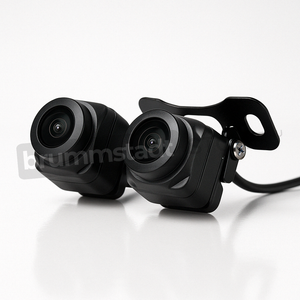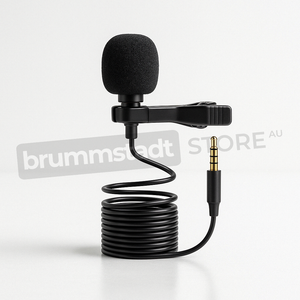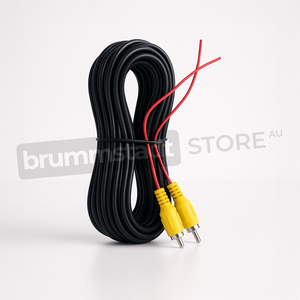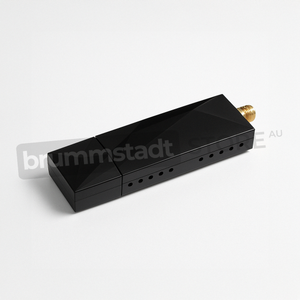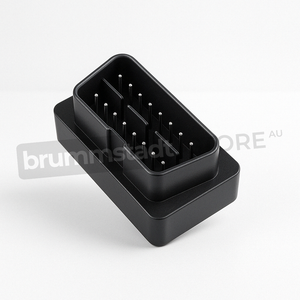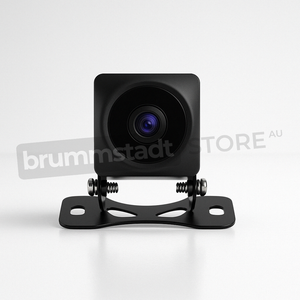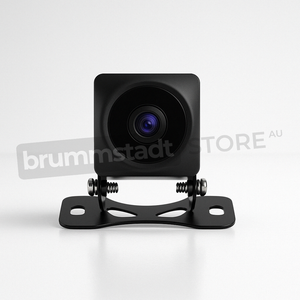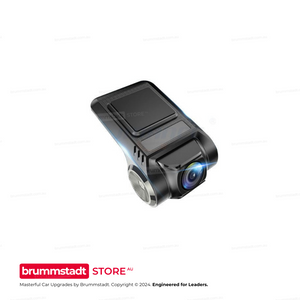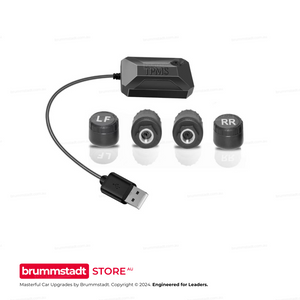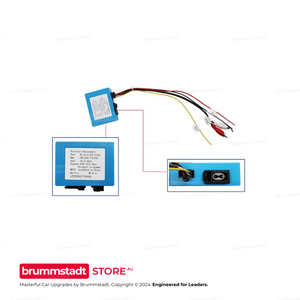Frequently Asked Questions
Everything you need to know about this head unit
Connect the single RCA cable with the yellow plug (included in your package) to extend your Bluetooth signal. This cable doubles as both a camera input AND a Bluetooth/WiFi antenna extension. The two small blue wires attached are antenna boosters that significantly improve connection stability. This simple connection takes 30 seconds and resolves 90% of Bluetooth issues. Make sure it's firmly connected even if you're not using a rear camera.
Try these proven solutions:
1. Quick Fix: Settings → Apps → Z-Link → Disable → Enable → Open (repeat each use)
2. Check Cables: Use the data/charge USB cable (not charge-only)
3. Bluetooth Setting: Disconnect all other Bluetooth connections - CarPlay needs exclusive access
4. Factory Reset Z-Link: Find the pink 'RESET' app, restart, reconnect Bluetooth, then try Z-Link
5. Sound Issues: Switch audio source to 'AUX' or 'USB/AUX' in your vehicle menu
Most issues are resolved with step 1 or 3!
The processor differs between models: The 2/32GB has a 4-Core processor, while 4/64GB and 8/128GB models feature the powerful 8-Core Cortex-A55 processor. Combined with RAM differences: The 2/32GB model with its 4-Core processor and limited RAM may experience slowdowns with heavy multitasking. The 4/64GB with 8-Core provides smooth performance for most users - no lag, seamless app switching, and enough storage for maps and music. The 8/128GB with 8-Core offers maximum performance with its generous RAM allowing unlimited multitasking and massive storage for extensive media libraries. Think of RAM like your desk space - more RAM means you can have more apps open simultaneously without slowing down.
Absolutely normal! These head units are complete replacement systems with their own GPS antenna, microphone, and Bluetooth module. Your factory connectors for these features won't be needed anymore. The important connections are: main power harness, speaker outputs, and the yellow RCA cable (even if not using a camera - it extends Bluetooth range). Any leftover factory plugs can be safely tucked away. If you're unsure about any connection, our support team is here 7 days a week.
Z-Link updates are handled through system firmware updates. Go to Settings → System → System Update. If an update is available, download it to a USB drive (FAT32 format) and install. Important: Never download Z-Link APKs from unofficial sources - they won't work and may cause issues. If you're having compatibility issues with newer iOS versions, the disable/enable workaround (Settings → Apps → Z-Link) usually resolves them while waiting for official updates.
Consider your usage:
• 2/32GB (4-Core): Budget option - fine for basic use, but may lag with multiple apps due to 4-Core processor and limited RAM
• 4/64GB (8-Core): Sweet spot - smooth Android Auto/CarPlay, multitasking, and ample storage
• 8/128GB (8-Core): Premium choice - unlimited multitasking, massive storage, future-proof for years
Most customers choose 4/64GB for the perfect balance of performance and value. The extra RAM makes a huge difference in daily smoothness!
The yellow RCA cable's blue antenna wires also boost WiFi signal! Make sure this cable is connected. Additionally, try these tips: Position the blue antenna wires away from metal surfaces, check that your phone's hotspot is set to 2.4GHz (not 5GHz) for better range, and ensure the head unit's WiFi sleep policy is set to 'Never' in Settings → WiFi → Advanced. For best performance with wireless CarPlay, keep your phone within 1-2 meters of the head unit.
Go to Settings → Sound → Equalizer and adjust to your preference. For more volume, increase the 'Loudness' setting. The 4/64GB and 8/128GB models have superior audio chips that provide cleaner, louder sound. If you have an amplifier, use the RCA outputs for best quality. Also check Settings → Factory Settings (password usually 126) → Audio settings for additional gain controls. Remember: higher-spec models (4GB+) include premium audio components for noticeably better sound.
Yes! Most vehicles work instantly. If not, use the steering wheel learning app: tap the steering wheel icon, press each button on your wheel, and assign functions. For newer vehicles with CANbus, we provide CANbus modules for automatic setup. Some vehicles may need the Key1/Key2 wires connected (usually included in our harness). If you're having trouble, let us know your exact vehicle model and we'll provide specific instructions.
We offer a 30-day return policy. If it doesn't fit or there's a compatibility issue, we'll work with you to resolve it. If you change your mind, a 20% restocking fee applies. Our team verifies compatibility before shipping to minimize issues. We provide installation support 7 days a week to help resolve any problems. With our 3-year warranty and Australian-based support, you can purchase with confidence. Full details in our Refund Policy.
Historical Evolution of the Ford Transit Series:
1. First Generation Transit – 1965-1978:
Debuting initially in Europe, the Ford Transit was instantly appreciated for its spacious capacity, practical front-engine configuration, and broad adaptability. Its car-like handling coupled with significant payload capacity captured substantial market share, becoming popular among small businesses, delivery services, and tradespeople. The Transit swiftly gained a reputation for reliability, endurance, and day-to-day practicality.
2. Second Generation Transit – 1978-1986:
The second era saw progressive updates to design, powertrain, and user comfort. Improved visibility, cabin refinements, and increasingly diverse wheelbase options cemented the Transit’s wide acceptance. At this stage, Transit vans had become firmly established, trusted work vehicles throughout Europe, Asia, Australia, and various international markets experiencing rapid commercial expansion.
3. Third & Fourth Generations – 1986-2000:
In these generations, the Transit continuously evolved. More aerodynamic body designs enhanced fuel efficiency, while refinements in drivability and cabin ergonomics significantly boosted everyday usability. Diverse configurations allowed adaptation across all forms of commercial transport, elevating the Transit’s global esteem and market dominance in numerous commercial segments.
4. Fifth Generation Transit – 2000-2013:
Consistently evolving, the Transit at this stage matured considerably. Variations like Transit Jumbo and Tourneo people-mover variants expanded its flexibility, increasingly supported by improved safety standards, powerful diesel engines for better towing and payload capability, and repetition of fleet-friendly reliability and longevity. The Transit became irreplaceable for commercial fleets globally and earned the strong, loyal following it enjoys today.
5. Sixth Generation Transit (2013-2017):
Entering 2013, the Transit—available globally in configurations including panel van, crew-cab, minibus, and chassis-cab—further exemplified Ford's commitment to versatility, refinement, and dependability. Notably, this generation introduced two distinct variants: the full-sized Transit (often termed 'two-tonne' Transit) and the smaller, urban-focused Transit Custom. Globally, such as in regions of Australia, North America, Europe, and Asia, this flexible platform demonstrated marked improvements over prior models—cleaner, more fuel-efficient EcoBlue diesel engines, better ride comfort, upgraded interior design, and more sophisticated technology integrations. The interior functionality improved notably with ergonomic cabin layouts, comprehensive dashboard instrumentation, improved noise dampening, and substantial strides in cabin aesthetics.
To complement and expand upon the robust capabilities and technical foundations of the Transit 2013-2017 model, many owners recognize meaningful benefits available from modernization and expansion of onboard technology. One exceptionally suitable option comes from Brummstadt: a specialized head unit, specifically fitting Transit interiors, engineered thoughtfully to ensure authentic integration and visual cohesion with the original dashboard aesthetics.
Brummstadt's premium infotainment head unit represents considerable advancement over factory-standard audio and connectivity options. With wired and wireless Apple CarPlay and Android Auto compatibility designed into the system, this sophisticated solution greatly expands convenience and safety while driving. Drivers benefit from real-time traffic information and simplified navigation through popular mapping apps like Apple Maps, Google Maps, or WAZE. Imagine finishing an enjoyable dinner outing—before stepping into the Ford Transit, the next destination is comfortably entered on a smartphone. When entering the vehicle, destination details appear promptly on the head unit’s clearly illuminated screen, making travel seamless and intuitive, enabling passengers to remain relaxed without the concern of navigating busy streets manually.
Additionally, Brummstadt’s system accommodates the option of integrating high-definition 1080p cameras, positioned strategically at both front and rear. These sophisticated cameras deliver clear recordings, providing valuable safety evidence in the unfortunate event of a road incident, parking scrape incidents, or ambiguous driving disputes. They bring peace-of-mind security that effectively complements the practical and versatile nature of the Transit itself.
Moreover, the Brummstadt infotainment unit extends passenger enjoyment significantly further, offering entertaining features not often associated with vehicle travel. USB-connected joysticks allow passengers—on long-haul journeys or during extended commercial travel—to spend time engaging in multiplayer gaming displayed on the screen. This transforms mundane road trips into actively enjoyable moments, enhancing overall comfort for occupants.
Equally intriguing, advanced voice control capabilities are seamlessly integrated, allowing intuitive interaction with digital assistants—such as Siri or Google Assistant—to manage onboard navigation, music selection, messaging, or calls. Vehicle-linked connectivity bridges seamlessly with smart home devices—imagine smoothly instructing, “Hey Siri, turn on the front porch lights," ensuring travelers return home to a safe and welcoming environment.
Advantages and Driving Experience of the Ford Transit 2013-2017:
The 2013-2017 Ford Transit provides exceptional operational dependability and flexible usage configurations, ideal for diverse lifestyles and industries. Brightly designed cabin spaces, refined drive dynamics, significant towing and payload capacities, and economical engine options have allowed Transit models to excel in myriad applications—from businesses requiring maximum efficiency to growing families seeking roomier, comfortable transport. Notably, Ford secured a unified global presence with this generation, offering broadly standardized offerings that still managed tailored adjustments to suit individual markets around the globe.
Selecting thoughtful aftermarket technological components introduces renewed vigor into the vehicle—universally regarded as a reliable, user-centric choice. Implementing advanced infotainment integrations, such as the Brummstadt premium head unit, adds a further dimension to traveling comfort, entertainment, convenience, and connectivity. Trips become safer with enhanced navigation and clearer visibility, more comfortable with automatic connectivity integration, and significantly more pleasant through shared multimedia and gaming capabilities. In this way, Ford’s reliable and functional Transit vehicle becomes a personal reflection of individual usability preferences and considered technological advancement, creating an optimal environment for drivers and passengers alike.















